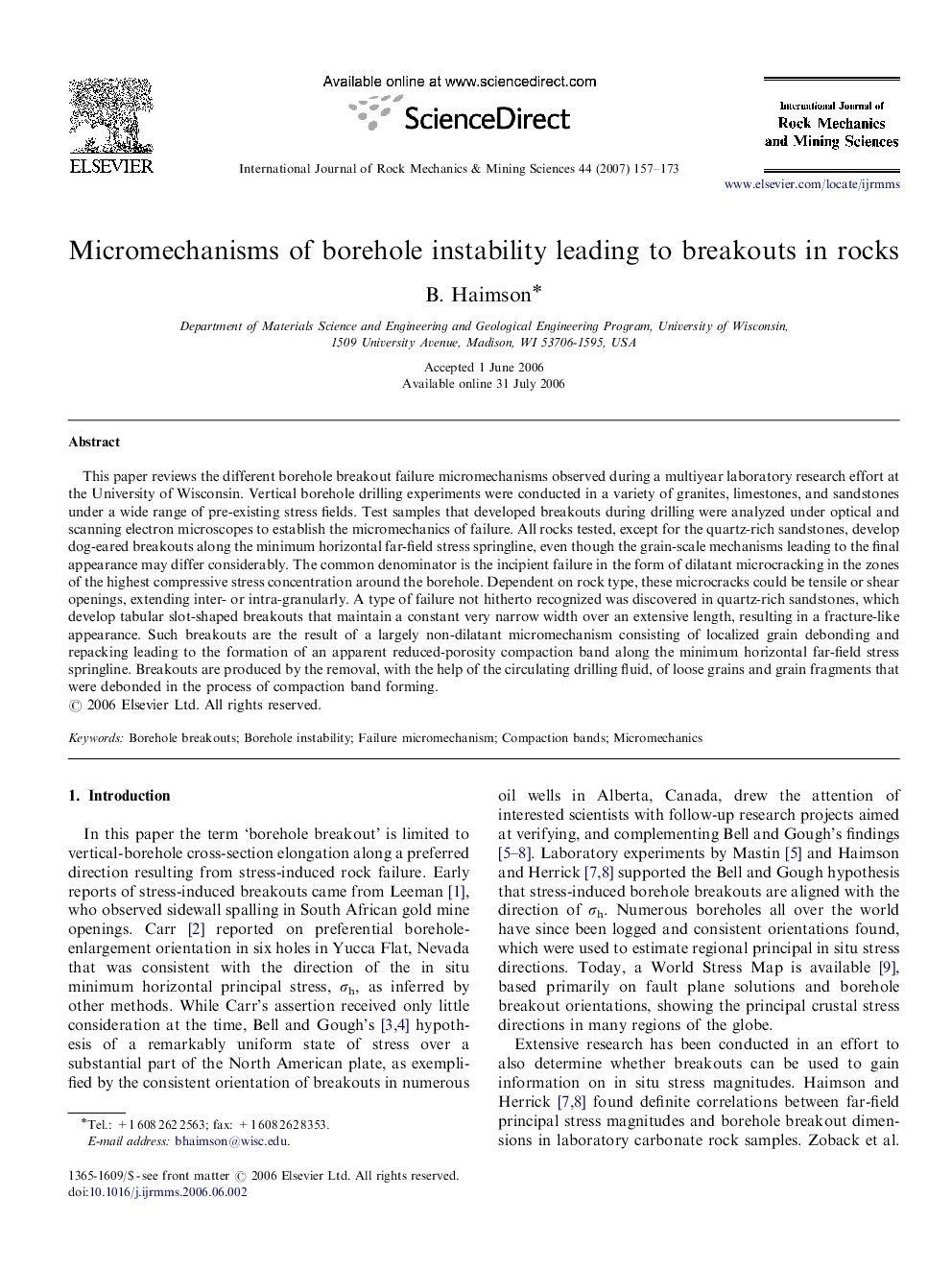| Article ID | Journal | Published Year | Pages | File Type |
|---|---|---|---|---|
| 810430 | International Journal of Rock Mechanics and Mining Sciences | 2007 | 17 Pages |
This paper reviews the different borehole breakout failure micromechanisms observed during a multiyear laboratory research effort at the University of Wisconsin. Vertical borehole drilling experiments were conducted in a variety of granites, limestones, and sandstones under a wide range of pre-existing stress fields. Test samples that developed breakouts during drilling were analyzed under optical and scanning electron microscopes to establish the micromechanics of failure. All rocks tested, except for the quartz-rich sandstones, develop dog-eared breakouts along the minimum horizontal far-field stress springline, even though the grain-scale mechanisms leading to the final appearance may differ considerably. The common denominator is the incipient failure in the form of dilatant microcracking in the zones of the highest compressive stress concentration around the borehole. Dependent on rock type, these microcracks could be tensile or shear openings, extending inter- or intra-granularly. A type of failure not hitherto recognized was discovered in quartz-rich sandstones, which develop tabular slot-shaped breakouts that maintain a constant very narrow width over an extensive length, resulting in a fracture-like appearance. Such breakouts are the result of a largely non-dilatant micromechanism consisting of localized grain debonding and repacking leading to the formation of an apparent reduced-porosity compaction band along the minimum horizontal far-field stress springline. Breakouts are produced by the removal, with the help of the circulating drilling fluid, of loose grains and grain fragments that were debonded in the process of compaction band forming.
